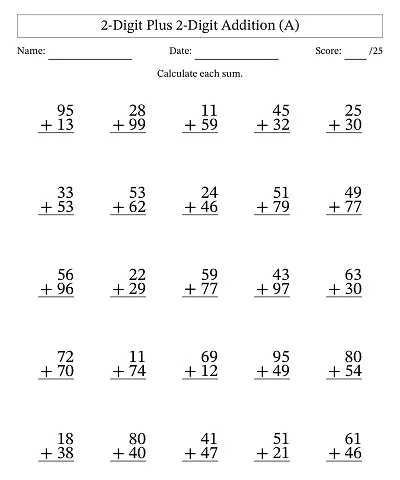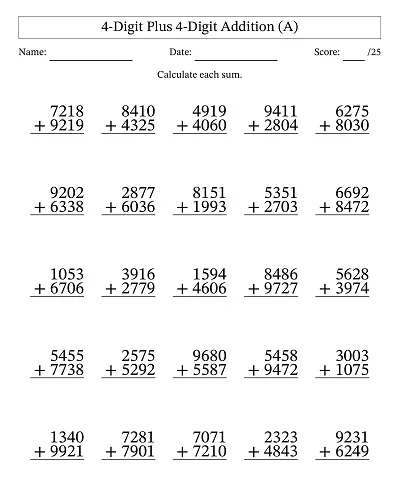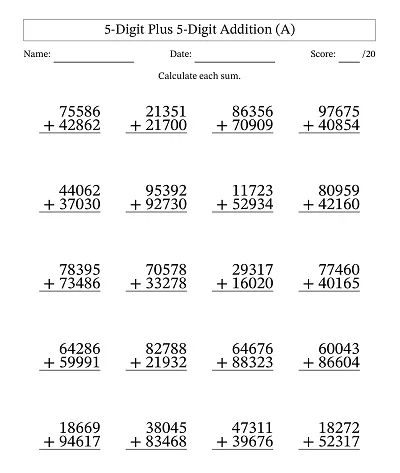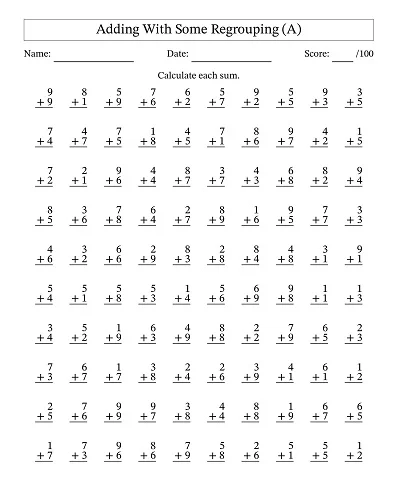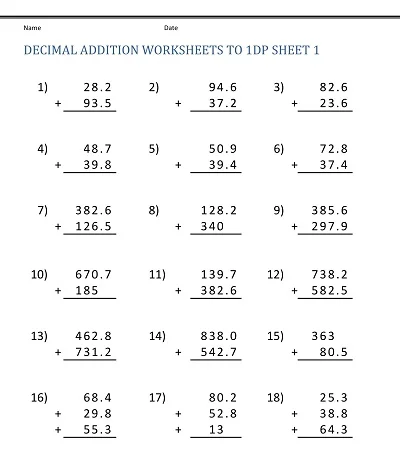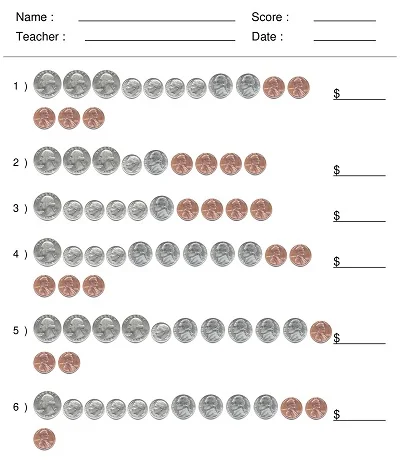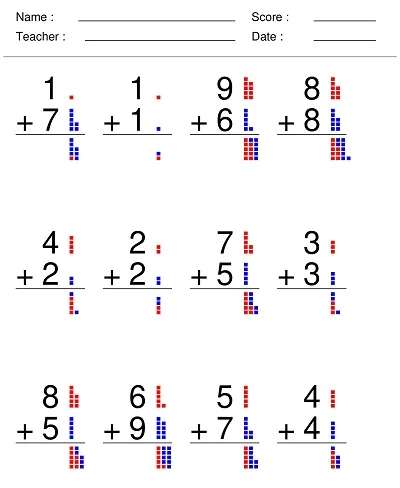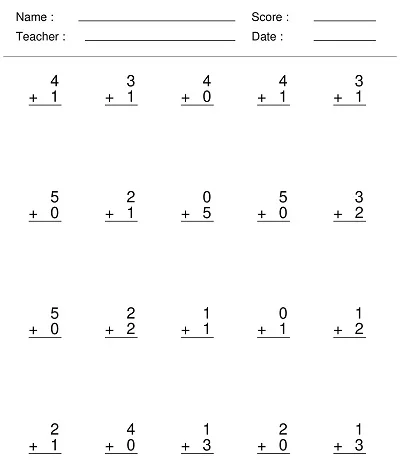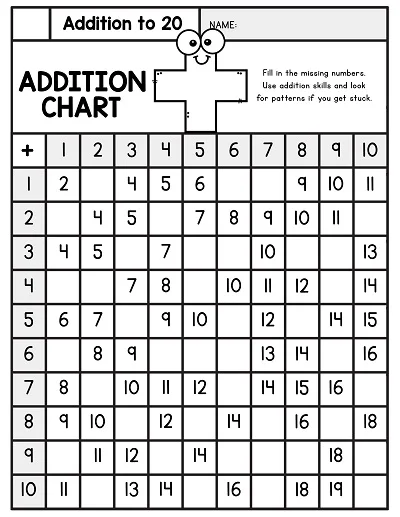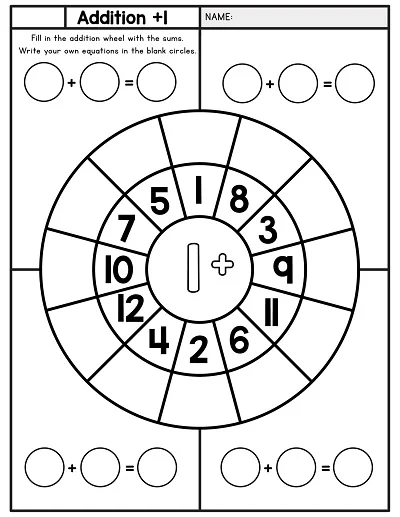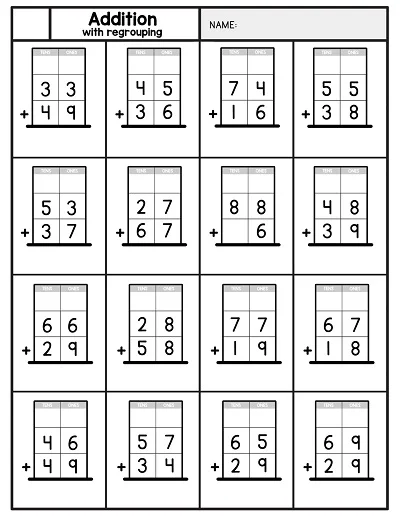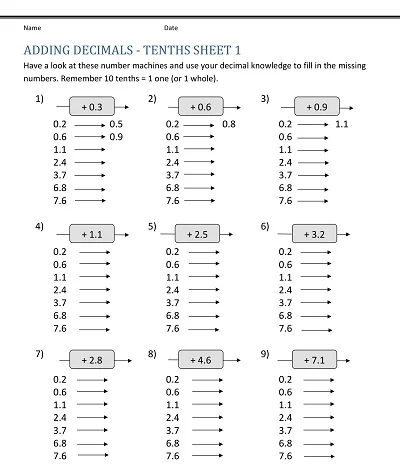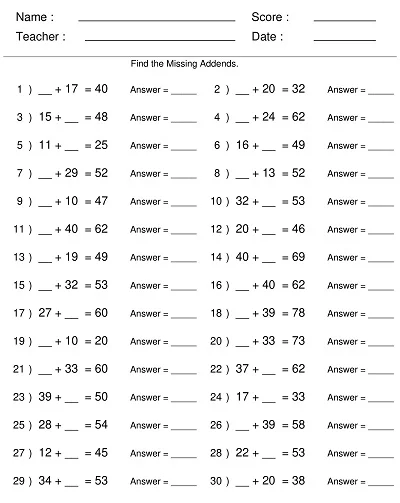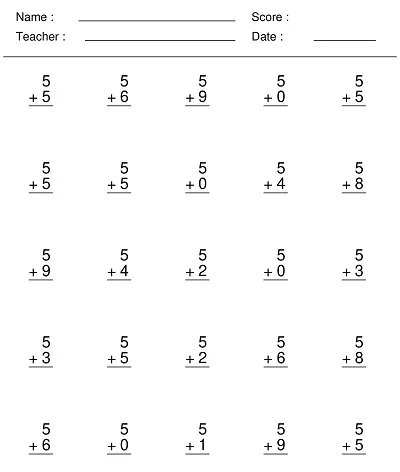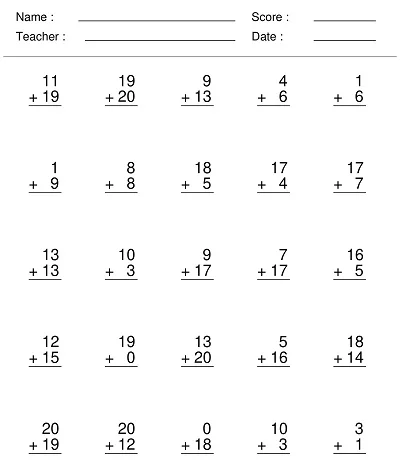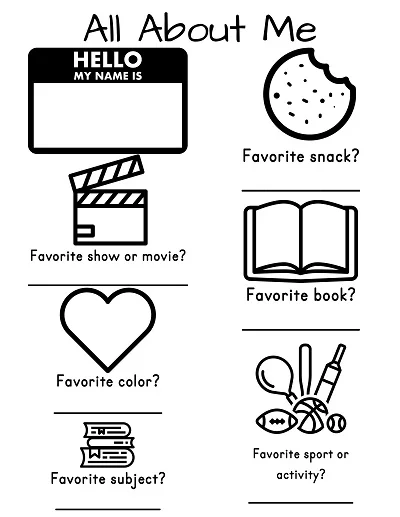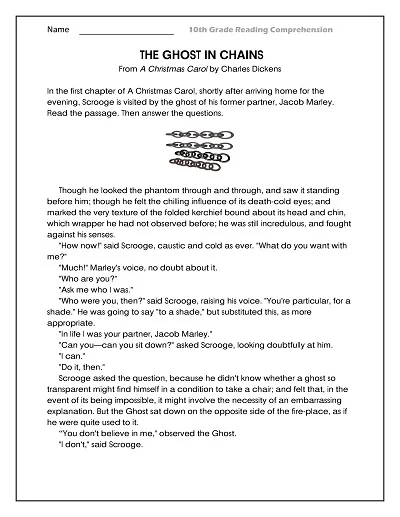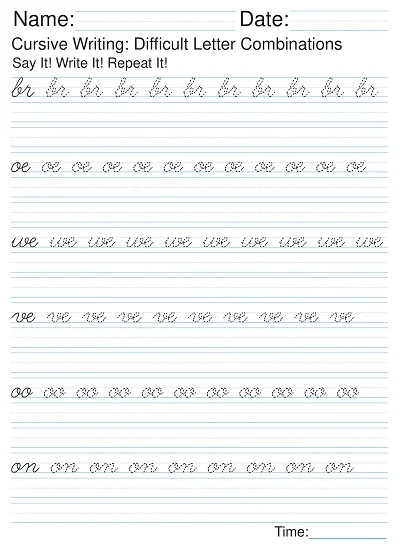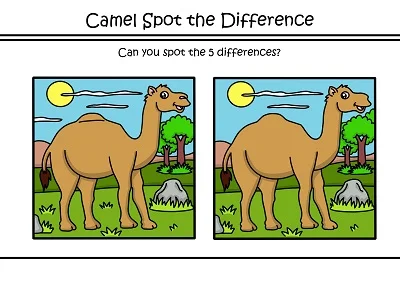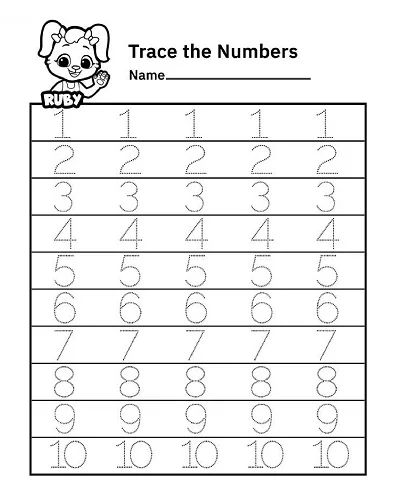Addition Practice Worksheets are teaching aids intended to support the acquisition of addition skills and assess a student’s proficiency, one of the basic arithmetic operations. Such worksheets primarily work on problems that in some way call for the addition of two or more numbers to arrive at a sum.
These worksheets include adding figures, numbers, decimal points, and multiple figures. They cater to different education levels across the addition bracket or column, ranging from adding mere single digits to more involved problems. Parents and educators use them to construct and emphasize critical basic mathematical operations systematically and sequentially.
Download Free Addition Practice Worksheets
Benefits of Addition Practice
Addition practice worksheets also provide guidelines for those who want to follow them, thereby helping the students improve their calculations with visible benefits in all other domains we have considered above.
Here are a few notable advantages:
Reinforcement of Basic Math Concepts
These worksheets give the learners practice exercises that help to re-emphasize the basic skills in the fundamental operation of addition. When learners are exposed to a new sequence of addition problems, they steadily enhance foundational knowledge and set the groundwork for advanced mathematics.
Improvement in Problem-Solving Skills
Numeracy, especially addition word problems, requires practice; therefore, students are taught various solutions. This enhances problem-solving skills and fosters flexibility in thinking that caters to the challenges that arise in any context.
Enhanced Speed and Accuracy
These worksheets contain serial practices that students do, enabling them to accelerate their calculation ability with time. This efficiency is significant for executing knowledge-based activities and assessments such as tests and examinations, where speed cannot be separated from efficiency and accuracy.
Builds Confidence and Reduces Math Anxiety
To achieve this, familiarity and skill level also improve the student’s attitude towards mathematics. Mathematical ability increases with constant practice, and they can see their progress on worksheets, so they do not feel intimidated to learn math.
Facilitates Independent Learning
Furthermore, practice worksheets given in a classroom are approached so that students can complete them on their own. This learning method allows for self-discipline and problem-solving, which are crucial elements when learning on your own. Hence, it hones skills in self-learning.
Types of Addition Practice Worksheets
Types of Addition Practice Worksheets include:
- Single-Digit Addition Worksheets: Designed for less knowledgeable students, these worksheets’ content is to add numbers up to 9. They assist the students in understanding what is intended in addition and the speed they are supposed to take in performing the addition.
- Multi-Digit Addition Worksheets (Without Carrying): Adding up numbers within multiple digits without carrying over characterizes these worksheets. It moves from single-digit addition and educates students on place value and column addition.
- Multi-Digit Addition Worksheets (With Carrying): Intended for the second part, these worksheets incorporate concepts regarding the use of carry-over or bringing over to the following regiments, which helps add higher numerical digits.
- Word Problem Addition Worksheets: These worksheets require students to interpret text-based problems. They incorporate realistic settings and get the students to solve particular problems involving addition. They increase the use of addition in daily life and sharpen the mind while solving problems.
- Themed Addition Worksheets: These are easy to find and use in consolidating learning, as they come in themes such as holidays, seasons, or characters the learner loves. They are especially appropriate in young learners’ teaching, as they can significantly assist in maintaining their interest throughout the teaching-learning process.
- Timed Addition Drills: Timed drills are another endeavour designed to enhance the speed and efficiency of operations. They require students to solve as many addition problems as possible within the specified time. This practice is also superb in extending the flow and external searching.
Tips for Using Addition Practice Worksheets
Moreover, there are also practice worksheets, which are essential and needed building blocks in developing a child’s core ability in Mathematics. Here are tips to make the most out of these resources:
1. Start with Simple Problems
First, start with word problems related to addition and work with addition worksheets with digits not exceeding one. This will give the child confidence and help him or her appreciate the idea learned without immense pressure.
2. Incremental Complexity
To ease the students into the new learning style and difficulty level, use a gradual progression to problem worksheets consisting of double-digit sums carrying over numbers, more than two addends, and others. The above stepwise manner ensures that the learner has understood some of the basic tenets of addition.
3. Use Visual Aids
Adding worksheets involving objects such as pictures or number lines is advisable. Such a tool may popularize complex ideas among young individuals to enhance their dimension of understanding.
4. Encourage Time Challenges
However, several tips should be followed when teaching a child how to add. They include the following: After the child is comfortable with addition, the next step is timed worksheets. This can be an amusing way to teach them to type faster and with fewer mistakes, but be careful it does not turn to pressure or stress.
5. Review and Reinforce
It is essential to review the worksheets repeatedly to ensure the child can understand them well and know which learning aspects the child must practice more. Practice comes into play here, whereby the learner repeats the names of numbers in English until they get the addition part right.
Why use Addition Practice Worksheets
Practice worksheets are among the best things in the mathematics learning area for several reasons that cannot be ignored. First, they organize how students can be shocked and improve on addition problems, from easy to the most complex ones. These systematic approaches help develop confidence and the skills to use addition as a means of counting.
Moreover, these worksheets can help meet learners’ needs in terms of difficulty. Educators can make worksheets more challenging and cater to a student’s needs. They also provide opportunities to practice skills in a single operation, essential in acquiring knowledge and the ability to compute mathematical facts.
Also, worksheets facilitate tracking a student’s progress since they become a physical form of documentation that can easily be handed to parents. Altogether, worksheets on addition practice augment initial math skills for learning and improvement on a personalized and progressive basis.
How to Create Addition Practice Worksheets
When creating new worksheets focused specifically on addition practice, there are few indications that it is a simple process if the goal is to help children or anyone else who can benefit from improved mathematics abilities.
Here’s how to create practical addition practice worksheets:
- Start With Objectives: Decide on the skill level required by the mentioned worksheet and its overall goal and purpose. Is the idea to solve simple addition problems that add figures in single digits, or are you aiming at more challenging addition problems that involve figures in tens or hundreds?
- Choose Your Format: Organize how you would like the worksheet to appear. Will it be a list of problems formatted sequentially so that the program looks like a list of issues, or will it use the puzzle or theme format?
- Create Problems: Produce additional problems that will help you achieve your goals. This could be done manually or using online resources and available generators to fashion the issues.
- Include Instructions: Include instructions outside the charting area at the top of the worksheet. If the instructions are intended for children of tender age, make them as clear and precise as possible.
- Provide Examples: This is particularly true for beginners; the authors should include one or two examples of problems solved to help the learners understand how these problems are solved.
- Leave Space for Answers: Remember to leave enough area alongside or just below each problem so students can write their answers.
- Include an Answer Key: Record the answer, which a student or a tutor may use to check their work. If preferred, this may be on the same page as the above columns or on a different piece of paper.
- Make it aesthetically pleasing: Using funny cartoon images or other elements related to the young learners’ hobbies will bring fun to the work while making it seem less like a chore.
When you follow all these steps, you are in a position to develop additional practice worksheets that have been designed with the target group in mind regarding the intended skill level.

